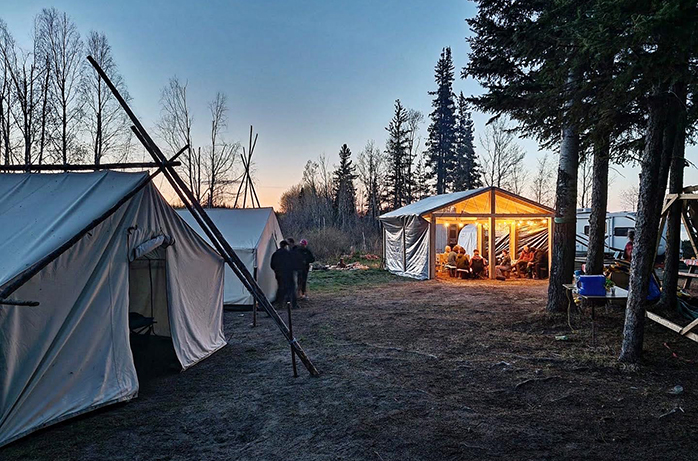
Vimy Outdoor Pursuits: The Spirit of the Land
We see it on TV and social media, shows and posts of people surviving alone in the wild or living “off the grid” in a log cabin made by hand, but do those people really exist? The High School Outdoor Pursuits students recently had the opportunity to visit a camp in Northern Saskatchewan, where the owner truly was one of those people. The students travelled to the Northern part of Montreal Lake where they met Trapper Jarrett Nelson, a Woodland Cree descendant who makes his living trapping animals and surviving by using his knowledge of the land.

Jarrett Nelson was generous enough to invite some of our Vimy students to take part in some land-based learning activities. As we arrived at camp, he had all of the students and teachers sit in a circle around a fire pit that was not yet burning. Each person was given the opportunity to speak about why they had come to visit this camp and what they hoped to walk away with. After listening to each person speak, Jarrett then spoke about what he hoped to gain from this experience. It was at that point that I realized that we were all in this together regardless of whether it was for the same reasons or not. The fire was started. Representing Mother Earth and her spirit, the fire needed to remain lit 24/7 for the entire duration of our stay. This was the students first task, one that required communication and team work.

The next day began by having some of the students help set the fishing nets early in the morning. On a lake this size, that meant having an intimate knowledge of the lake and of where the fish would be at this specific time of year. Living off of the land not only requires the knowledge of how to acquire food, but also the knowledge of how to use different parts of nature to meet specific needs. The next task for the students was to help flesh a moose hide that Jarrett had taken earlier. Setting up the hide on a pole we used tools made of moose bone to scrape the hide clean. This was no easy job, and we spent the better part of the day taking turns working on the hide. At the same time, we also took a hide that was already fleshed and learned how to stretch it and get it ready for tanning. This also required extensive scraping of the hide and also took most of the day. As we worked on these tasks, you could really feel the connection to the land. The tasks were hard, but everyone was willing to do their part as we realized that this was all part of a bigger picture, one that we were all going to help create.

With many hands available for work, the students and the teachers also took on other responsibilities, such as cleaning fish for dinner and skinning a beaver to get the pelt and feed the meat to the dogs. Everything we did was related to survival and was based in nature. We were all reliant upon one another and nature and we were always grateful for what we were given. This being our first time focusing on land-based learning skills, we were taught the significance of these skills and the importance of these skills for the traditional Woodland Cree way of life. As we prepared to depart camp we gathered once again in a circle around the fire. Each of us was given the opportunity to speak about our experiences and what we learned and what we were grateful for. The fire was then extinguished.
Rob Schmidt
Vimy Outdoor Pursuits Program Director










